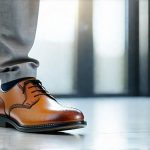Foot mobility is often overlooked in broader fitness routines, yet it serves as a foundational element for overall body mechanics, balance, and even energetic flow according to Traditional Chinese Medicine (TCM). Many individuals experience restricted movement in their feet due to factors like ill-fitting footwear, sedentary lifestyles, or past injuries. This restriction doesn’t just impact gait or athletic performance; it can ripple upwards through the kinetic chain, contributing to issues in ankles, knees, hips, and even the lower back. Addressing foot mobility isn’t simply about increasing range of motion – it’s about restoring natural movement patterns and encouraging a more harmonious relationship between your body and the ground beneath you.
Traditional Chinese Medicine posits that specific points on the feet correlate with various organs and meridian pathways within the body. The Kidney Meridian, in particular, begins at the sole of the foot, making foot exercises a potentially powerful way to stimulate this vital energy pathway. In TCM philosophy, healthy kidneys are associated with vitality, longevity, and foundational qi (life force) – impacting not just physical health but also emotional resilience and mental clarity. While Western medicine doesn’t recognize meridians or qi in the same way, the practice of foot mobility exercises can undeniably improve circulation, reduce tension, and enhance proprioception, all contributing to overall wellbeing. This article will explore a series of foot mobility exercises designed to encourage healthy movement while simultaneously acknowledging their potential connection to Kidney Meridian stimulation as understood within TCM principles. You might also find value in exploring breathing exercises that influence renal blood flow as a complementary practice.
Understanding Foot Mobility & The Kidney Meridian
The human foot is an incredibly complex structure comprised of 26 bones, 33 joints, and over 100 muscles, tendons, and ligaments. Its intricate design allows for remarkable adaptability – absorbing impact, providing stability, and facilitating locomotion. When this complexity becomes restricted due to tightness or lack of use, it can create a cascade of imbalances throughout the body. Common restrictions include limited dorsiflexion (difficulty bringing the toes upwards), pronation/supination imbalances (how the foot rolls inward or outward), and stiffness in the arch. These limitations not only affect biomechanics but also potentially reduce energetic flow along key meridian pathways.
The Kidney Meridian, according to TCM, originates at Yongquan (KD1) – a point located on the sole of the foot roughly one-third up from the heel. It travels upwards through the body, influencing kidney function, adrenal health, and lower back strength. Stimulating points along this meridian is believed to tonify Kidney qi, which supports vitality, courage, willpower, and overall resilience. Foot exercises, by increasing circulation and encouraging movement in the soles of the feet, may help activate these points and promote a balanced flow of energy through the Kidney Meridian. It’s important to remember that this connection is rooted in TCM philosophy and requires further scientific investigation; however, even without accepting the meridian theory, the physical benefits of foot mobility remain substantial. For those experiencing related issues, understanding prostatitis and the surprising role of foot mobility can be insightful.
The importance of mindful movement cannot be overstated when approaching foot health. Unlike aggressive stretching or forced range-of-motion exercises, these movements should be gentle, exploratory, and responsive to your body’s signals. Listen carefully for any pain or discomfort and modify accordingly. The goal isn’t to achieve maximal flexibility overnight but rather to gradually restore natural movement patterns and enhance the connection between your feet and the ground.
Foot Mobility Exercises: A Practical Guide
Here are a few exercises designed to improve foot mobility and potentially stimulate Kidney Meridian energy flow. Remember to perform these exercises slowly and mindfully, paying attention to any sensations in your feet and body.
- Toe Separations & Grasps: Sit comfortably with your feet flat on the floor. Begin by spreading all ten toes as wide apart as possible, holding for a few seconds. Then, curl all ten toes downwards, gripping the floor with them. Repeat this process 10-15 times. This exercise helps improve toe dexterity and strengthens intrinsic foot muscles.
- Ankle Circles: Rotate your ankles in both clockwise and counterclockwise directions for 30 seconds each way. Focus on a smooth, controlled motion. This improves ankle joint mobility and circulation.
- Toe Raises & Heel Raises: Stand with your feet hip-width apart. Slowly rise up onto your toes, lifting your heels off the ground as high as comfortable. Hold for a second or two, then slowly lower back down. Repeat 10-15 times. Then, shift your weight to your heels and lift your toes off the ground, holding for a second or two before lowering them down. This strengthens calf muscles and improves ankle stability.
- Marble Pickups (or Towel Curls): Sit in a chair with your feet flat on the floor. Place 20 marbles (or use a small towel) in front of you. Use your toes to pick up one marble at a time and place it into a bowl. Repeat until all the marbles are moved. This exercise strengthens toe muscles and improves foot dexterity.
- Foot Massage with a Ball: Sit comfortably and roll your foot over a tennis ball or lacrosse ball for 30-60 seconds per foot. Pay particular attention to areas of tension or tenderness. This helps release fascia, improve circulation, and reduce muscle tightness.
Incorporating Foot Mobility into Daily Life
Beyond dedicated exercise sessions, there are several ways to integrate foot mobility into your everyday routine:
- Barefoot Walking: Whenever possible, walk barefoot on natural surfaces like grass, sand, or earth. This allows your feet to experience a wider range of motion and strengthens the intrinsic muscles. Even walking barefoot indoors for short periods can be beneficial.
- Footwear Considerations: Choose shoes that have a wide toe box and allow for natural foot movement. Avoid high heels and overly restrictive footwear whenever possible. Proper footwear is crucial for maintaining healthy foot function.
- Self-Massage: Regularly massage your feet, paying attention to areas of tension or discomfort. Use your thumbs to apply gentle pressure along the soles of your feet, focusing on points that feel tender or knotted. This can help release fascia and improve circulation.
- Mindful Movement Awareness: Pay attention to how you stand and walk. Are you evenly distributing weight across both feet? Are you engaging your core muscles for support? Becoming more aware of your body’s movement patterns can help identify areas of imbalance and improve overall biomechanics. Consider incorporating gentle mobility drills to enhance these practices.
Addressing Common Foot Issues & Restrictions
Many individuals experience specific foot issues that require targeted attention:
- Plantar Fasciitis: This condition involves inflammation of the plantar fascia, a thick band of tissue running along the bottom of your foot. Gentle stretching exercises for the calf muscles and plantar fascia, combined with self-massage, can help alleviate symptoms. Avoid activities that aggravate the pain and consider using orthotics to support your arch.
- Achilles Tendonitis: Inflammation of the Achilles tendon can cause pain in the back of the heel. Stretching exercises for the calf muscles are crucial for improving flexibility and reducing tension on the tendon. Gradual strengthening exercises can also help restore function.
- Bunions: These bony protrusions at the base of the big toe can be painful and limit foot movement. Wearing shoes with a wide toe box and using toe spacers can help alleviate pressure and improve comfort. In severe cases, surgical intervention may be necessary.
- Flat Feet/High Arches: Both conditions can affect biomechanics and increase the risk of injury. Appropriate arch support (orthotics) and strengthening exercises for intrinsic foot muscles are essential for addressing these imbalances.
The Mind-Body Connection & Foot Health
Ultimately, maintaining healthy feet is about more than just physical exercises and proper footwear. It’s also about cultivating a deeper connection with your body and recognizing the importance of mindful movement. By paying attention to how your feet feel and responding to their needs, you can unlock a greater sense of groundedness, stability, and vitality. The practice of foot mobility exercises – whether viewed through the lens of Western biomechanics or Traditional Chinese Medicine’s meridian theory – offers a powerful pathway towards holistic wellbeing. Remember that consistency is key, and even small changes in your daily routine can have a significant impact on your overall health and resilience. You might also benefit from morning reflex work to jumpstart your day.





















